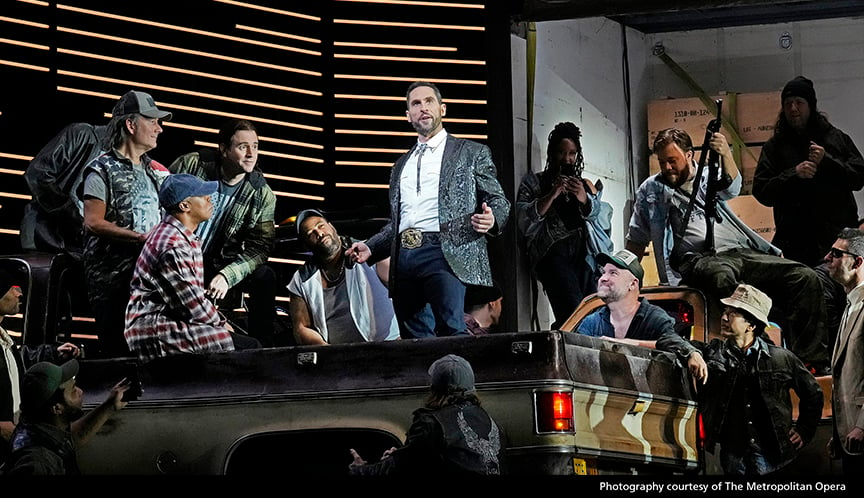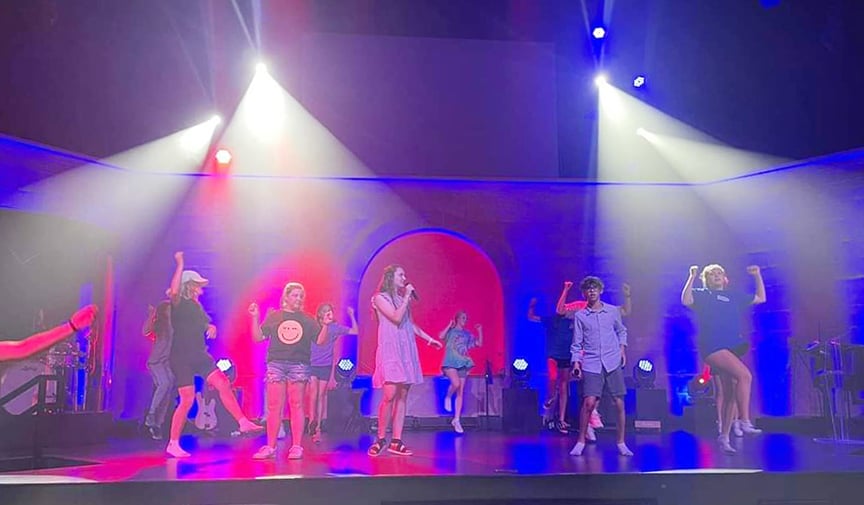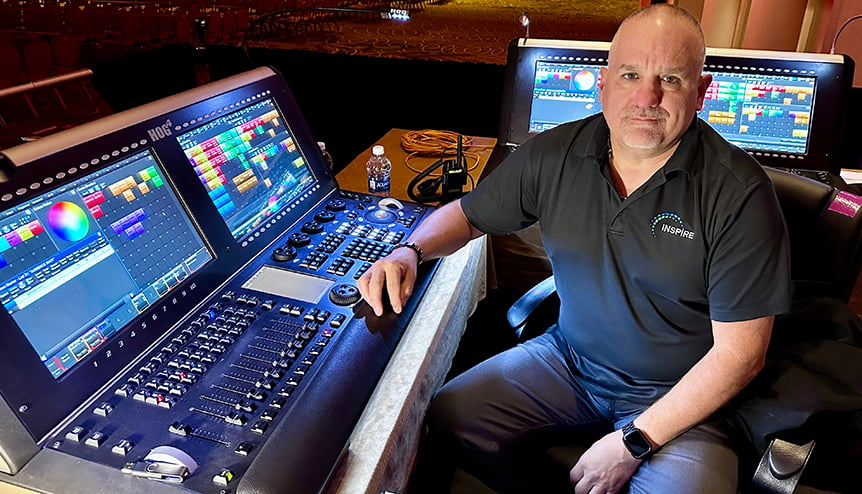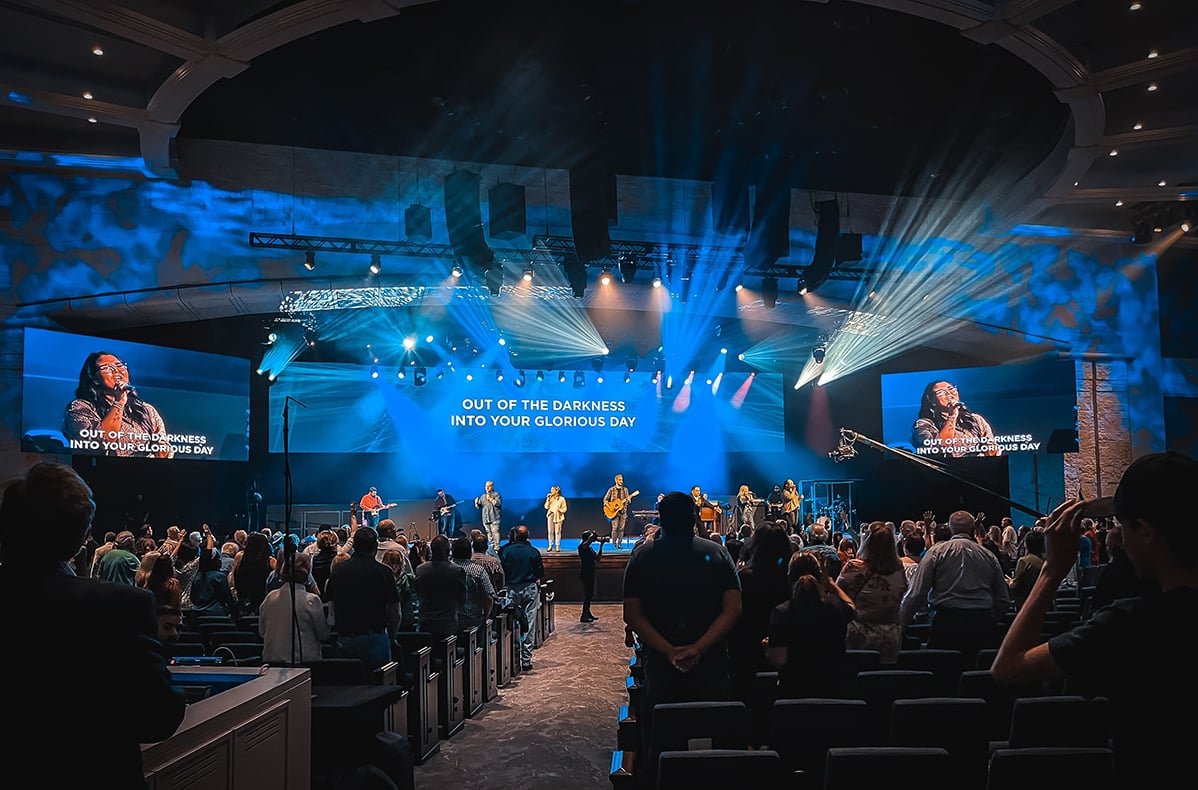The Metropolitan Opera House at Lincoln Center is an iconic performing arts venue and has been a New York City cultural landmark for over a century. Home to the world’s top tier operatic performances, the venue recently upgraded their lighting plot with High End Systems Halcyon Gold and Platinum fixtures.
John Froelich, the Met’s Resident Lighting Designer, has been at the helm since 2011. Froelich explains, “When I took over at the Met, there really wasn’t an organized approach to improve the lighting system. The repertory lighting rig was mainly conventional tungsten equipment and 4KW HMI theatre fresnels that were starting to fail in various ways after 20 years of hard use. In addition to aging equipment, we only had a partial rep plot, so our practice at the time was to re-hang and focus every position twice a day, once for the rehearsal during the day and again for the performance in the evening. I knew that upgrading to a larger and permanent repertory plot that relied heavily on moving lights was needed from both operational efficiency as well as increased design stability and flexibility. The first big change was permanently hanging VL3500 profiles on the FOH box fronts. The Halcyon Platinums were purchased as the third generation of equipment to take that spot, replacing some VL4000 profiles that have been repurposed elsewhere onstage.”
“Before the Halcyon Gold and Platinum upgrade this season, our auditorium moving light positions were all arc source fixtures. The move to the Halcyon line provided brighter sources with a more even field. Given that we only have sixteen positions available to hang equipment these upgrades have provided more design flexibility. It might be strange to some that we have hung Halcyon Golds one hundred feet away from the stage. The decision to use Golds came down to fixture size; we have to use smaller fixtures in our Dress Circle rail position to eliminate the possibility of visual obstructions for our audience. Another improvement with the move to Halcyons has been the reduction in the noise floor for our audience.”
Froelich calls the flagship Halcyon range ‘a massive step forward in almost every way from previous offerings from ETC/High End’. “Their brightness, even field, and good color are all impressive. Another great feature for me is the three available frosts. I have implemented a ‘single fixture method’ to the METopera lighting rig. Rather than investing in profiles and wash fixture types, I have decided to stick with profiles that have heavy frost flags and use them as washes when needed. Sticking with less fixture types helps with artistic speed and overall rig efficiency, which is very important given the size and pace of our repertory. I have to say that a major deciding factor in choosing the Halcyon line over other offerings was the elimination of the dreaded ‘banana shutter’. The fact that I can use the Halcyons in a very wide zoom and have almost straight shutters really made the difference. Being able to make clean cuts off drops and scenery made the decision for me.”
John first saw Halcyon line during a visit to Austin, where he got a sneak peek with Bobby Hale and members of the HES/ETC team. He recalls, “It was funny, because everyone couldn’t figure out why I was so curious about the Golds … little did they know that since the Halcyon line closely matches one another in color/frost/edge etc., I immediately started thinking about a full replacement of my auditorium rep mover rig I mentioned previously.”
The lighting design team recently added repertory lighting ladders to the permanent repertory rig. There are a total of eight light ladders, four on each side of the main stage in line with the stage overhead lighting positions. The ladders are currently equipped with Halcyon Gold on the lowest rung and a VL3500 profiles on the upper rung. Froelich says “The Golds are holding their own onstage among other fixtures with much larger wattage specifications. The positions have been great. As I update repertory shows, we have been able to consolidate multiple side positions into these ladders which has freed up needed space in the wings during performances. In addition to reduced physical positions, the shift to moving lights has helped repertory efficiency by eliminating the number of sources on side positions. It has been a great addition to the repertory rig. I am hoping to secure funding to make the movers on these new ladders a single unit type, hopefully for the start of the 2024-25 season.”
The final improvement for the 2023-24 season that John made was to replace the overhead bridge spots. The original specification was 1.2kw Pani projectors modified to be follow spots mounted above the stage on Bridge 1 (the most DS overhead lighting position upstage of the proscenium) that needed to be upgraded to match the output of other rig improvements over recent years. “I had the idea to replace them with a moving light, so that designers could more easily control color/frost/max intensity as well as sync with full stage black outs and other big button type looks, but we wanted to maintain live operator control. This led us to look at Halcyon which advertised the ‘follow spot’ feature. At first, that feature had too much resistance in pan/tilt for our operators, but we were able to work with ETC to get custom firmware written which dialed it back. We used our in-house electrical/fabrication shop to design and build a chassis for the light, and to create a controller. This gives our operators local control over iris size and intensity.”
The Met also sports a bevy of ETC gear. Control is via two ETC Eos TI, plus 30+ Nomad Pucks. For fixtures, the venue houses a full complement of Lustr2 Lekos and Fresnels, nine Source 4 LED Series 3 fixtures, and many legacy tungsten ETC fixtures. Finally, ETC Irideon WLZ fixtures are used in the lighting design office. John says, “We also have an ETC Obsession II running up in the domes … just in case we need to pull some ancient show files out of it - it has happened!”
It takes a village to make lighting the Metropolitan Opera performances a success, and John says, “This place would not function without the daily Herculean efforts from the members of IATSE Local #1 and USA829. The lighting design team is me, Aaron Sporer, Keri Thibodeau, and Jimmy Lawlor. Our Programmers are James Kolditz, Mathew Rodgers, and Ryan Stofa. Our Head Electrician is Josh Marks, Assistant Heads Kirt Burcroff and Jeff Delgrosso, First Assistant Electricians Ken Ardito, Chris May, and Eric Theodoropolos. I have had a long relationship with Victor Seastone who is amazing. The staff at the ETC New York office were of great help to us figuring out the Halcyon followspot situation, and Bobby Hale and Matt Stoner down in Austin who showed me the Halcyon units. Matt is a great dude and VERY responsible for my decision to put Halcyons in the rig. Finally, at 4Wall, Al is the man and a lover of cheeseburger dumplings!”
“The MET is probably the hardest place on earth to design a show. From the start of tech to the downbeat on opening night, a designer might have 40 hours of stage time with lighting - with absolutely zero dedicated lighting time. The lighting design team takes great pride guiding visiting designers during their time with us. As the resident LD, not only is it my job to shepherd new productions, but also to act as the caretaker for the shows once they enter our rep. In a few seasons when the show comes back, it’s my job - with help from my team - to faithfully recreate the show onstage. Sometimes revival intervals can be 10+ years apart, and were created on a completely different lighting rig, and other times original directors are invited back … there are lots of crazy situations I find myself in. Let’s just say there is no shortage of work!”





